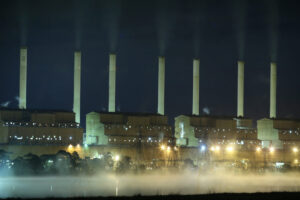Who is right on emissions? > Check the facts
Who: “If Mr Abbott can justify his wild assertion of a 50 per cent reduction in emissions, he needs to tell us what alternative figures he is using, or immediately retract his fanciful claim.” Greens WA spokesperson on Climate Change, Robin Chapple MLC.
The claim: The Opposition Leader, Tony Abbott was incorrect in his comments on greenhouse gas emissions when interviewed on the ABC on Monday night.
The facts: Tony Abbott claimed that: “Australia’s emissions intensity has reduced by about 50 per cent over the last two decades,”. This claim was refuted in a fact published by The Australia Institute on Tuesday 3 September 2013.
However, Robin Chapple, himself has mistaken emissions intensity with total emissions in his media release (5 September). Chapple makes the point that there was a 31 per cent increase in emissions of greenhouse gasses in the previous twenty years and not a 50 per cent reduction as he argues Tony Abbott claimed.
Tony Abbott was referring to emissions as a proportion of GDP whereas Robin Chapple is referring to absolute emissions.
The finding: Robin Chapple has misrepresented Tony Abbott’s claim regarding emissions intensity.
Discussion of evidence: In the political debate over the actions Australia has taken and might take in the future to address global warming all sides appear to be straying from the facts to further their political agenda.
Between the Lines Newsletter
The biggest stories and the best analysis from the team at the Australia Institute, delivered to your inbox every fortnight.
You might also like
Climate target malpractice. Cooking the books and cooking the planet.
As the Albanese government prepares to announce Australia’s 2035 climate target, pressure is mounting to show greater ambition.
Nearly a fifth of Australia’s emissions now come from sending fossil fuels overseas
Australia’s exports of fossil fuels are not only increasing emissions across the world, they are also becoming a larger share of our domestic emissions.
Expensive, publicly-funded Carbon Capture & Storage is barely visible in new emissions data
Buried deep in Australia new emissions data release is this nugget, in the ‘revisions’ section: “Fugitive sector emissions decreased 2.2% over the year to March 2025, mainly driven by reductions in natural gas venting emissions from new carbon capture and storage activities and a decline in production across both surface and underground coal mining. Estimates

